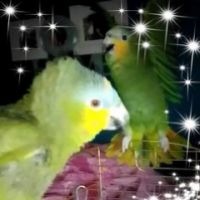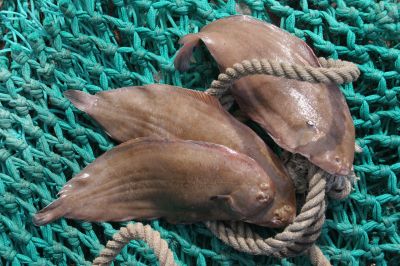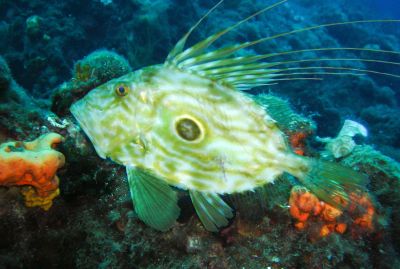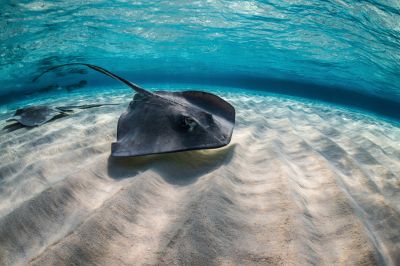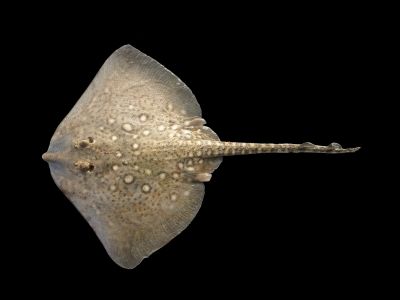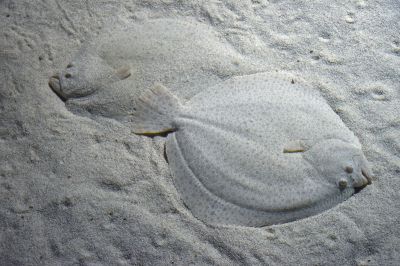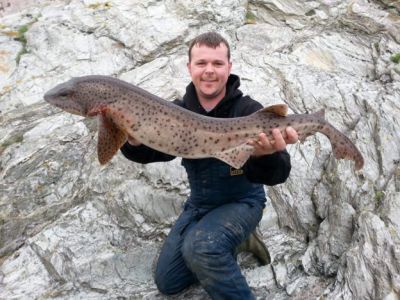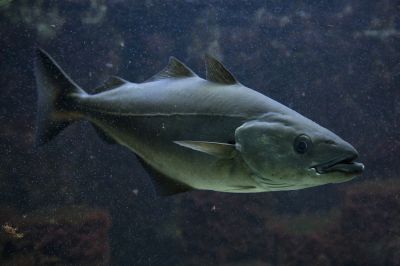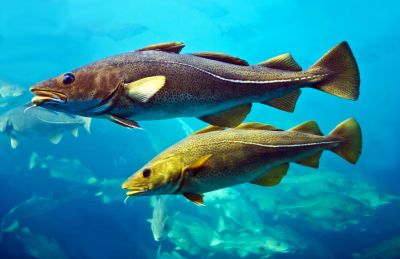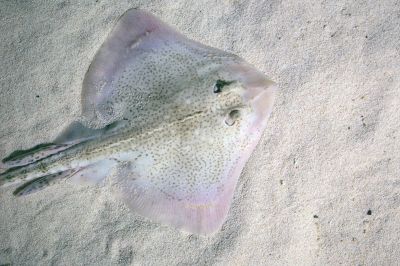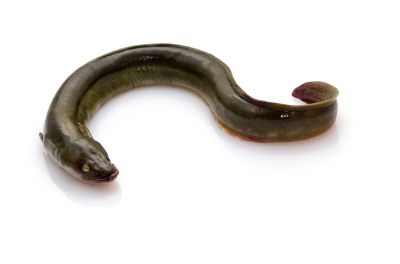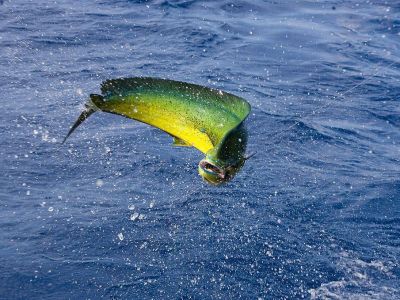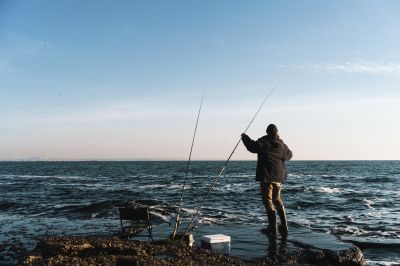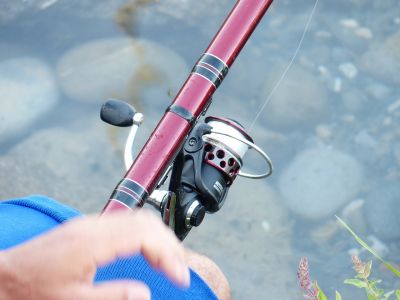
Discover everything to fish in Crawfordsburn
Find the best moment to go fishing in Crawfordsburn, the most caught species, the techniques used, go fish with anglers nearby, find a fishing charter or guide, save your spots and discover new ones.
Go for it!Fishing spots mapDiscover the best fishing spots in Crawfordsburn
Fishing in Crawfordsburn
What can I fish there ?Join our 288 fishermen and 3 cofishermen in Crawfordsburn in County Down. The fishing forecast is currently 2.5. The most caught fishes here are the thornback ray, the coalfish, the red bream and seabass. Come try the most famous fishing techniques like the trolling for mahi mahi, support fishing for black sea bream, surfcasting fishing for sea bream or angling - using natural bait.

Fishing trips 3 co-anglers currently in Crawfordsburn !
3 fishing trips proposals currently in Crawfordsburn !
Congratulations, your collaborative fishig profile has been created!

Fishing forecast : go fishing at the best time!
1.6
00h00
The fish is hiding.
It's not the best moment.
Exclusiveness
The fishing forecast
Discover the scientific algorithm that gives you the best moment to go fishing at Crawfordsburn !
This is a score calculated according to about forty criteria: moon, weather conditions, atmospheric pressure, tides, swell ...
. Forecast calculated at 4 days

Most caught fish species in Crawfordsburn Top species caught by Club members
Top species caught by Club members
N°1 | The Dab fish
The Dab fish belongs to the Pleuronectidae family. It has an average size of 25 to 40 cm with an average weight of 1 kg. It has a lifespan of 12 years. The Dab fish breeds from February to April. The female lay up to 150,000 oocytes. The Dab fishing is open from October to Mars. the minimum catch size is 25 cm. The Dab fish, scientifically named Limanda Limanda, is a teleosteal species that belongs to the pleuronectidae or flatfish family. It has a flattened body with a more or less oval shape. The eyes of this dexterous fish are both generally located on the right side. The animal has a tiny mouth with small teeth. Its lateral line is curved at the pectoral fin. A characteristic feature that allows it to be easily distinguished from other species with similar morphology such as flounder. Thin scales cover the upper surface of the flounder, making its skin rough to the touch. The back is golden or yellowish brown in color and has dark spots. The belly or blind face is white. Varying from beige to light brown, the general color of dab allows it to blend in with the backgrounds.
Fishing period : October to March
Minimum size : 25 cm
Difficulty : ![]()
![]()
![]()
![]()
![]()
N°2 | The John Dory Fish
The John Dory fish belongs to the Zeidae family. It measures 30 to 50 cm on average and can reach a maximum weight of 8 kg. It can live up to 12 years. This fish is caught all year round but more easily from April to July. This fish has a high body and very strongly compressed laterally. Its head and the base of its fins carry thorns and bone ridges. The filaments carried by the dorsal fin are very long in juveniles and gradually regress until the animal reaches its adult size. Its eyes are high and his protractile mouth is widely split. An arched lateral line can be seen above the pectoral fins. Its color varies from grey-green with silvery to golden yellow reflections, often marked by longitudinal mottling. A large black eye patch surrounded by grey adorns the middle of each flank.
Fishing period : all year
Minimum size : no restriction
Difficulty : ![]()
![]()
![]()
![]()
![]()
N°3 | The Sting Ray fish
The Sting Ray fish belongs to the Dasyatidae family. The total length of this line is generally greater than 1 m, with a weight of 15 to 20 kg. The maximum known length is 2.50 m. The maximum lifespan is 20 years. Breeding usually takes place in summer. The female gives birth to 4 to 9 young. It can be fished all year round. The body of the sting ray is flattened, diamond-shaped, pointed at the front, with large pectoral fins: it is as wide as it is long. The tail, representing 60% of the total length, looks like a whip and, at one third of its base, it has a serrated spine, connected to venomous glands under the skin. The dorsal surface is bluish grey or reddish-grey in color, sometimes with white spots. This back is smooth, without tubers. The ventral side is clear. The sting ray has no dorsal fin or caudal fin and its pelvic fins are very small. The eyes are located on the dorsal surface while the mouth, nostrils and gill slits (five slits on each side) are on the ventral surface. The eyes are prominent, which gives him a very wide field of vision. Next to the eyes, an inhalant valve, called a spiracle, carries water into the gills. The mouth is located quite far back. Teeth are numerous and small, pointed in males and molar-shaped in females. The tail acts as a simple rudder and is not used for movement. It is done by the large pectoral fins, by beating. These fins are also used for burying in sand.
Fishing period : All year
Minimum size : 36 cm
Difficulty : ![]()
![]()
![]()
![]()
![]()
N°4 | The Thornback Ray
The Thornback Ray belongs to the Rajidae family. The size of this line can reach 1.20 m long for females, 70 cm for males, and 60 cm wide. Its lifespan is estimated at about fifteen years. It reproduces in the spring. The female lays between 70 and 140 young each year. It can be fished all year round. The looped line has the flattened shape of a narrow, diamond-shaped disc, sometimes wavy at the back. The pectoral fins are large, triangular in shape. They are welded to the head and to the whole body. The tail is long and thin, with a triangular pelvic fin on either side. The snout and rostrum are short and pointed. The eyes are close together, in front of the spiracles. The color of its back is greyish or light brown, sometimes solid, but usually marked by dark spots assembled or in sinuous lines. This drawing is completed with large yellowish, irregular spots. These are then surrounded by black in young people. An adult individual may also be adorned with grey-bordered eye-spots. The belly is whitish, underlined with grey on the periphery. The mouth and 2 series of 5 gill slits are located on the ventral side. The upper jaw is armed with powerful teeth, pointed in males and flattened in females. Finally, the tail is adorned with a series of dark or light, uneven rings. The skin is rough. In adults, the dorsal surface of the disc includes a few large curls (curved horny spines with an oval base) arranged irregularly. The young have a very pronounced median line, up to the t
Fishing period : All year
Minimum size : 36 cm
Difficulty : ![]()
![]()
![]()
![]()
![]()
N°5 | Black Bream Fish
The Black breamfish, also known as Acanthopagrus butcheri, is a Sparidae. In general, its average size is 15 to 35 cm and its weight is 500 g to 2.5 kg. However, some individuals can reach up to 60 cm and 4 kg. The black bream has a lifespan of 27 years. Its spawning period is between August and January. It can have up to 300,000 spawn each season. It is not hard to catch and offer a little resistance. The Black bream has a high body and relatively compressed laterally, with symmetrically curved dorsal and ventral fins. The mouth is of moderate size compared to the body and has six incisors in the front of the lower and upper jaws. The body is covered with large scales that can be cycloid or slightly ctenoid. The head is essentially flake-free, except for the lids. A flake sheath covers the soft ray bases of the dorsal, anal and caudal fins. The Black Bream is silvery, from golden brown or bronze to grey-green on the back as well as on the sides with sometimes greenish reflections, depending on its habitat. The belly is white. The fins are all dark, with black borders. The caudal fin is often dark olive-brown.
Fishing period : All year
Minimum size : 25 cm
Difficulty : ![]()
![]()
![]()
![]()
![]()
N°6 | Seabass
The Seabass belongs to the Moronidae family. Its size is usually between 70 and 80 cm (1.10 m maximum). The life expectancy of the seabass is variable: about thirty years in an aquarium, 24 years in Ireland, 6 years maximum most often in the Mediterranean. Breeding takes place between December and March or January to May depending on the location. The female lays 200,000 eggs at once. The body of this fish is elongated and slightly compressed. The two dorsal fins (the first thorny and the second soft) are well separated and have almost the same length and height. The anal fin is composed of 10 soft rays preceded by 3 thorny rays. The caudal peduncle is quite elongated and the caudal fin is indented, with an upper lobe often slightly longer than the lower lobe. The pectoral fins are short. The upper part of the head is quite straight, the upper jaw is a little shorter than the lower jaw. The operculum may have a more or less visible black spot in its posterior upper part. The scales are small in size but clearly visible. The lateral line is slightly arched in the front part of the body. The back is grey in color, the sides are lighter, with yellowish or silvery reflections. The pectoral and ventral fins are yellowish white; the others are darker. Mostly in young individuals, black spots may be present in the dorso-ventral region.
Fishing period : Refer to section below
Minimum size : 40 cm
Difficulty : ![]()
![]()
![]()
![]()
![]()
N°7 | The Brill fish
The brill fish belongs to the Scophthalmidae family. The minimum size of capture is 30 cm but can reach 75 cm for 6 kg. He can live up to 3 years. It breeds from late spring to early summer. The female can lay up to 15 million eggs. It can be fished all year. The brill has an oval body. It rests on its right side and has its left side. Thus, when placed with the head facing left, both eyes are located above the mouth. Its common name of brill comes from a particularity of its dorsal fin, whose origin is far in front of the eye and whose first rays are free and branched. The distance between the two eyes is greater than the diameter of one eye. The lateral line is very curved at the pectoral fin. As with many flatfish, the coloring is variable and depends on the biotope. The brill is indeed capable of homochromia, i.e. to match the color of the background. The coloring is rather brown, more or less speckled, and also varies according to the environment on a live fish. It has many round spots whose edges are incomplete rings of darker colors. The blind side is whitish.
Fishing period : All year
Minimum size : 30 cm
Difficulty : ![]()
![]()
![]()
![]()
![]()
N°8 | The Bull Huss
The Bull Huss belongs to the Scyliorhinidae family. Small in size, they usually measure 60 to 80 cm, although there are larger ones, since they can reach 1.5 m in the Mediterranean and 2 m in the Atlantic. This fish can live for 75 years. It spawns a hundred eggs all year round, especially in the late winter and in July. It is abundant every day of the year. This fish is not really active but still is hard to catch. The upper part of the Bull Huss is light brown in color, covered with small dark brown spots. Because of this pattern of spots, it is also called spotted cat shark. The part of the flank is white and grey. The mouth and nose holes are below his obtuse head. The particularity of the Bull Huss is that its nostrils are linked to the mouth by a curved line.
Fishing period : All year
Minimum size : 58 cm
Difficulty : ![]()
![]()
![]()
![]()
![]()
N°9 | The Coalfish
The Coalfish belongs to the Gadidae family. With a size of up to 1.30 m, the coalfish can weigh up to 10 kg. It has a life span of 8 to 10 years. The breeding period varies according to the location. The female lays up to 4 million eggs. It can be fished all year round but at a minimum catch size of 61 cm. Its body is fusiform and elongated, covered with small round scales. In profile, the lower jaw is slightly prominent. The back is greenish brown; the belly is silvery. The clear and almost straight lateral line is well marked. It extends along the entire length of its sides. There may also be a black spot at the base of the pectoral fins. The mouth is terminal. She's black on the inside. The fins are soft-raked. They are dark like the back of a fish, except for the lighter pelvic fins. The coalfish has 3 dorsal fins, the first being triangular, the others longer, and 2 anal fins. The pelvic fins are positioned well forward, under the head, and the caudal fin is a little concave. Young people may have a small barbel on their chin.
Fishing period : All year
Minimum size : 61 cm
Difficulty : ![]()
![]()
![]()
![]()
![]()
N°10 | The Cod fish
The Cod fish belongs to the Gadidae family. The Cod fish measure between 50 and 90 cm on average but can reach 1.80 metres for 40 kg and a maximum weight of 95.5 kg in some specimens. It can live up to 25 years. It reproduces from February to April. The female can lay 500,000 eggs. It can be fished all year round but productivity is better in March, April and October, November. Its elongated body is covered with small scales. The muzzle is relatively elongated, slightly prominent, conical and obtuse. A large mouth with the posterior edge reaching one third of the eye. There are many small teeth in each jaw. Presence of a barbel under the jaw. It has three dorsal fins and two anal fins. The pale lateral line is curved in the first 2/5 of the body. The body cavity is lined with a grey or silvery membrane and has small black, brown or red spots on the sides and back. The color varies according to the habitat and diet.
Fishing period : March, April, October and November
Minimum size : 35 cm
Difficulty : ![]()
![]()
![]()
![]()
![]()
N°11 | The Common Skate
The Common Skate belongs to the Rajidae family. Its average size is 2.85 m for 110 kg of weight. It has a lifespan of 100 years. It breeds in spring to summer. The female can lay up to 40 eggs. They are considered as threatened species by the IUCN or International Union for Conservation of Nature. The Common Skate has a pointed snout and rhombic shape, with a row of spines along the tail. The upper surface is colored olive-grey to brown with dark or white spot, and the bottom is lighter blue-grey.
Fishing period : Not available
Minimum size : Not available
Difficulty : ![]()
![]()
![]()
![]()
![]()
N°12 | The Conger Eel
The Conger Eel belongs to the Anguillidae family. Its average size is 40 to 150 cm for an average weight of 4 kg. It has a life span of 50 years old. They breed from spring to summer. The best period to fish for Conger Eel is from April to September at night. Snake-shaped, oval body and the rear part is vertically compressed. The skin is relatively thick and covered with mucus that covers the scales. The lower jaw is longer than the upper and the nostrils are tubular. The dorsal and anal fins merge with the caudal fin and this all forms a single continuous fin that starts well behind the pectoral fins. There is no pelvic fin. Back brown-green with yellowish belly for yellow eel but back black with silver belly for silver eel. It turns black with a silver belly in silver eels for individuals ready to migrate to the Sargasso Sea.
Fishing period : April to September
Minimum size : 58 cm
Difficulty : ![]()
![]()
![]()
![]()
![]()
N°1 | The Dab fish
The Dab fish belongs to the Pleuronectidae family. It has an average size of 25 to 40 cm with an average weight of 1 kg. It has a lifespan of 12 years. The Dab fish breeds from February to April. The female lay up to 150,000 oocytes. The Dab fishing is open from October to Mars. the minimum catch size is 25 cm. The Dab fish, scientifically named Limanda Limanda, is a teleosteal species that belongs to the pleuronectidae or flatfish family. It has a flattened body with a more or less oval shape. The eyes of this dexterous fish are both generally located on the right side. The animal has a tiny mouth with small teeth. Its lateral line is curved at the pectoral fin. A characteristic feature that allows it to be easily distinguished from other species with similar morphology such as flounder. Thin scales cover the upper surface of the flounder, making its skin rough to the touch. The back is golden or yellowish brown in color and has dark spots. The belly or blind face is white. Varying from beige to light brown, the general color of dab allows it to blend in with the backgrounds.
Fishing period : October to March
Minimum size : 25 cm
Difficulty : ![]()
![]()
![]()
![]()
![]()
N°2 | The John Dory Fish
The John Dory fish belongs to the Zeidae family. It measures 30 to 50 cm on average and can reach a maximum weight of 8 kg. It can live up to 12 years. This fish is caught all year round but more easily from April to July. This fish has a high body and very strongly compressed laterally. Its head and the base of its fins carry thorns and bone ridges. The filaments carried by the dorsal fin are very long in juveniles and gradually regress until the animal reaches its adult size. Its eyes are high and his protractile mouth is widely split. An arched lateral line can be seen above the pectoral fins. Its color varies from grey-green with silvery to golden yellow reflections, often marked by longitudinal mottling. A large black eye patch surrounded by grey adorns the middle of each flank.
Fishing period : all year
Minimum size : no restriction
Difficulty : ![]()
![]()
![]()
![]()
![]()
N°3 | The Sting Ray fish
The Sting Ray fish belongs to the Dasyatidae family. The total length of this line is generally greater than 1 m, with a weight of 15 to 20 kg. The maximum known length is 2.50 m. The maximum lifespan is 20 years. Breeding usually takes place in summer. The female gives birth to 4 to 9 young. It can be fished all year round. The body of the sting ray is flattened, diamond-shaped, pointed at the front, with large pectoral fins: it is as wide as it is long. The tail, representing 60% of the total length, looks like a whip and, at one third of its base, it has a serrated spine, connected to venomous glands under the skin. The dorsal surface is bluish grey or reddish-grey in color, sometimes with white spots. This back is smooth, without tubers. The ventral side is clear. The sting ray has no dorsal fin or caudal fin and its pelvic fins are very small. The eyes are located on the dorsal surface while the mouth, nostrils and gill slits (five slits on each side) are on the ventral surface. The eyes are prominent, which gives him a very wide field of vision. Next to the eyes, an inhalant valve, called a spiracle, carries water into the gills. The mouth is located quite far back. Teeth are numerous and small, pointed in males and molar-shaped in females. The tail acts as a simple rudder and is not used for movement. It is done by the large pectoral fins, by beating. These fins are also used for burying in sand.
Fishing period : All year
Minimum size : 36 cm
Difficulty : ![]()
![]()
![]()
![]()
![]()
N°4 | The Thornback Ray
The Thornback Ray belongs to the Rajidae family. The size of this line can reach 1.20 m long for females, 70 cm for males, and 60 cm wide. Its lifespan is estimated at about fifteen years. It reproduces in the spring. The female lays between 70 and 140 young each year. It can be fished all year round. The looped line has the flattened shape of a narrow, diamond-shaped disc, sometimes wavy at the back. The pectoral fins are large, triangular in shape. They are welded to the head and to the whole body. The tail is long and thin, with a triangular pelvic fin on either side. The snout and rostrum are short and pointed. The eyes are close together, in front of the spiracles. The color of its back is greyish or light brown, sometimes solid, but usually marked by dark spots assembled or in sinuous lines. This drawing is completed with large yellowish, irregular spots. These are then surrounded by black in young people. An adult individual may also be adorned with grey-bordered eye-spots. The belly is whitish, underlined with grey on the periphery. The mouth and 2 series of 5 gill slits are located on the ventral side. The upper jaw is armed with powerful teeth, pointed in males and flattened in females. Finally, the tail is adorned with a series of dark or light, uneven rings. The skin is rough. In adults, the dorsal surface of the disc includes a few large curls (curved horny spines with an oval base) arranged irregularly. The young have a very pronounced median line, up to the t
Fishing period : All year
Minimum size : 36 cm
Difficulty : ![]()
![]()
![]()
![]()
![]()
N°5 | Black Bream Fish
The Black breamfish, also known as Acanthopagrus butcheri, is a Sparidae. In general, its average size is 15 to 35 cm and its weight is 500 g to 2.5 kg. However, some individuals can reach up to 60 cm and 4 kg. The black bream has a lifespan of 27 years. Its spawning period is between August and January. It can have up to 300,000 spawn each season. It is not hard to catch and offer a little resistance. The Black bream has a high body and relatively compressed laterally, with symmetrically curved dorsal and ventral fins. The mouth is of moderate size compared to the body and has six incisors in the front of the lower and upper jaws. The body is covered with large scales that can be cycloid or slightly ctenoid. The head is essentially flake-free, except for the lids. A flake sheath covers the soft ray bases of the dorsal, anal and caudal fins. The Black Bream is silvery, from golden brown or bronze to grey-green on the back as well as on the sides with sometimes greenish reflections, depending on its habitat. The belly is white. The fins are all dark, with black borders. The caudal fin is often dark olive-brown.
Fishing period : All year
Minimum size : 25 cm
Difficulty : ![]()
![]()
![]()
![]()
![]()
N°6 | Seabass
The Seabass belongs to the Moronidae family. Its size is usually between 70 and 80 cm (1.10 m maximum). The life expectancy of the seabass is variable: about thirty years in an aquarium, 24 years in Ireland, 6 years maximum most often in the Mediterranean. Breeding takes place between December and March or January to May depending on the location. The female lays 200,000 eggs at once. The body of this fish is elongated and slightly compressed. The two dorsal fins (the first thorny and the second soft) are well separated and have almost the same length and height. The anal fin is composed of 10 soft rays preceded by 3 thorny rays. The caudal peduncle is quite elongated and the caudal fin is indented, with an upper lobe often slightly longer than the lower lobe. The pectoral fins are short. The upper part of the head is quite straight, the upper jaw is a little shorter than the lower jaw. The operculum may have a more or less visible black spot in its posterior upper part. The scales are small in size but clearly visible. The lateral line is slightly arched in the front part of the body. The back is grey in color, the sides are lighter, with yellowish or silvery reflections. The pectoral and ventral fins are yellowish white; the others are darker. Mostly in young individuals, black spots may be present in the dorso-ventral region.
Fishing period : Refer to section below
Minimum size : 40 cm
Difficulty : ![]()
![]()
![]()
![]()
![]()
N°7 | The Brill fish
The brill fish belongs to the Scophthalmidae family. The minimum size of capture is 30 cm but can reach 75 cm for 6 kg. He can live up to 3 years. It breeds from late spring to early summer. The female can lay up to 15 million eggs. It can be fished all year. The brill has an oval body. It rests on its right side and has its left side. Thus, when placed with the head facing left, both eyes are located above the mouth. Its common name of brill comes from a particularity of its dorsal fin, whose origin is far in front of the eye and whose first rays are free and branched. The distance between the two eyes is greater than the diameter of one eye. The lateral line is very curved at the pectoral fin. As with many flatfish, the coloring is variable and depends on the biotope. The brill is indeed capable of homochromia, i.e. to match the color of the background. The coloring is rather brown, more or less speckled, and also varies according to the environment on a live fish. It has many round spots whose edges are incomplete rings of darker colors. The blind side is whitish.
Fishing period : All year
Minimum size : 30 cm
Difficulty : ![]()
![]()
![]()
![]()
![]()
N°8 | The Bull Huss
The Bull Huss belongs to the Scyliorhinidae family. Small in size, they usually measure 60 to 80 cm, although there are larger ones, since they can reach 1.5 m in the Mediterranean and 2 m in the Atlantic. This fish can live for 75 years. It spawns a hundred eggs all year round, especially in the late winter and in July. It is abundant every day of the year. This fish is not really active but still is hard to catch. The upper part of the Bull Huss is light brown in color, covered with small dark brown spots. Because of this pattern of spots, it is also called spotted cat shark. The part of the flank is white and grey. The mouth and nose holes are below his obtuse head. The particularity of the Bull Huss is that its nostrils are linked to the mouth by a curved line.
Fishing period : All year
Minimum size : 58 cm
Difficulty : ![]()
![]()
![]()
![]()
![]()
N°9 | The Coalfish
The Coalfish belongs to the Gadidae family. With a size of up to 1.30 m, the coalfish can weigh up to 10 kg. It has a life span of 8 to 10 years. The breeding period varies according to the location. The female lays up to 4 million eggs. It can be fished all year round but at a minimum catch size of 61 cm. Its body is fusiform and elongated, covered with small round scales. In profile, the lower jaw is slightly prominent. The back is greenish brown; the belly is silvery. The clear and almost straight lateral line is well marked. It extends along the entire length of its sides. There may also be a black spot at the base of the pectoral fins. The mouth is terminal. She's black on the inside. The fins are soft-raked. They are dark like the back of a fish, except for the lighter pelvic fins. The coalfish has 3 dorsal fins, the first being triangular, the others longer, and 2 anal fins. The pelvic fins are positioned well forward, under the head, and the caudal fin is a little concave. Young people may have a small barbel on their chin.
Fishing period : All year
Minimum size : 61 cm
Difficulty : ![]()
![]()
![]()
![]()
![]()
N°10 | The Cod fish
The Cod fish belongs to the Gadidae family. The Cod fish measure between 50 and 90 cm on average but can reach 1.80 metres for 40 kg and a maximum weight of 95.5 kg in some specimens. It can live up to 25 years. It reproduces from February to April. The female can lay 500,000 eggs. It can be fished all year round but productivity is better in March, April and October, November. Its elongated body is covered with small scales. The muzzle is relatively elongated, slightly prominent, conical and obtuse. A large mouth with the posterior edge reaching one third of the eye. There are many small teeth in each jaw. Presence of a barbel under the jaw. It has three dorsal fins and two anal fins. The pale lateral line is curved in the first 2/5 of the body. The body cavity is lined with a grey or silvery membrane and has small black, brown or red spots on the sides and back. The color varies according to the habitat and diet.
Fishing period : March, April, October and November
Minimum size : 35 cm
Difficulty : ![]()
![]()
![]()
![]()
![]()
N°11 | The Common Skate
The Common Skate belongs to the Rajidae family. Its average size is 2.85 m for 110 kg of weight. It has a lifespan of 100 years. It breeds in spring to summer. The female can lay up to 40 eggs. They are considered as threatened species by the IUCN or International Union for Conservation of Nature. The Common Skate has a pointed snout and rhombic shape, with a row of spines along the tail. The upper surface is colored olive-grey to brown with dark or white spot, and the bottom is lighter blue-grey.
Fishing period : Not available
Minimum size : Not available
Difficulty : ![]()
![]()
![]()
![]()
![]()
N°12 | The Conger Eel
The Conger Eel belongs to the Anguillidae family. Its average size is 40 to 150 cm for an average weight of 4 kg. It has a life span of 50 years old. They breed from spring to summer. The best period to fish for Conger Eel is from April to September at night. Snake-shaped, oval body and the rear part is vertically compressed. The skin is relatively thick and covered with mucus that covers the scales. The lower jaw is longer than the upper and the nostrils are tubular. The dorsal and anal fins merge with the caudal fin and this all forms a single continuous fin that starts well behind the pectoral fins. There is no pelvic fin. Back brown-green with yellowish belly for yellow eel but back black with silver belly for silver eel. It turns black with a silver belly in silver eels for individuals ready to migrate to the Sargasso Sea.
Fishing period : April to September
Minimum size : 58 cm
Difficulty : ![]()
![]()
![]()
![]()
![]()

Crawfordsburn - Fishing techniques Top fishing techniques
Top fishing techniques
N°1 | Trolling for Mahi Mahi
This magnificent warm-water fish, with its green and turquoise color mixed with subtle golden stroke, is one of the most beautiful fish you can catch.
N°2 | Support fishing for black sea bream
The sea bream approaches the coast when the waters warm up in summer and autumn. It is most often support-fished by boat: a technique that originates from the longline. It consists in equipping a line with a lead and several hook. This setting is then allowed to sink to the bottom and the wire is kept taut until it feels a continuous touch before being fully tightened.
N°3 | Surfcasting fishing for Sea bream
Assembling and baiting Once the spot has been chosen, you must bring fresh and/or live bait. For the sea bream, sliding setting are preferred so that the sea bream does not feel any resistance when it sows the bait. Setting and baiting with lugworm (or any other worm such as hard, jumbo, bibi, tube worm, American worm): Lugworm (mud worms) can be used and recovered at low tide under the small serpentine mounds. It can be dug up with a shovel or fork (the fork is less damaging to these fragile animals). Jumbo can also be found on our beaches. For the other worms, it is advisable to buy them directly from fishing shops. Strengths: - Very attractive for sea bream - Fits well on the hook - Easy to find Weaknesses: - Difficult to look for - Not very selective → you can take plaice, sole, Pollack... or even small bars that you should not hesitate to release.
N°4 | ANGLING - USING NATURAL BAIT
Angling is a vertical type of fishing that is the most accessible technique for beginners. It is fun, effective and can be practiced anywhere.
N°5 | Cast fishing with oak seed
Cast fishing with oak seed, a technique of fishing with a large rod for beautiful roaches mainly but which can reserve beautiful surprises, the oak seed being very appreciated by cyprinidae. A technique that does not require much equipment in fishing action.
N°6 | Fishing with bombette
Bombette fishing is a technique invented by Italian fishermen to fish for trout in lakes. Although this method of fishing is still relatively unknown to some people, it is becoming more and more common nowadays. It is even used for fishing carnivores (perch, pike, pike-perch, pike-perch...) Easy to implement and requiring little preparation time, this fishing technique is perfectly suited both to beginners wishing to learn trout fishing in water bodies, and to experienced fishermen wishing to take advantage of its many possibilities. But what does this technique really consist of? What equipment is suitable for this type of fishing? Here are some useful information that will help you start fishing with a bombette in good conditions.
N°1 | Trolling for Mahi Mahi
This magnificent warm-water fish, with its green and turquoise color mixed with subtle golden stroke, is one of the most beautiful fish you can catch.
N°2 | Support fishing for black sea bream
The sea bream approaches the coast when the waters warm up in summer and autumn. It is most often support-fished by boat: a technique that originates from the longline. It consists in equipping a line with a lead and several hook. This setting is then allowed to sink to the bottom and the wire is kept taut until it feels a continuous touch before being fully tightened.
N°3 | Surfcasting fishing for Sea bream
Assembling and baiting Once the spot has been chosen, you must bring fresh and/or live bait. For the sea bream, sliding setting are preferred so that the sea bream does not feel any resistance when it sows the bait. Setting and baiting with lugworm (or any other worm such as hard, jumbo, bibi, tube worm, American worm): Lugworm (mud worms) can be used and recovered at low tide under the small serpentine mounds. It can be dug up with a shovel or fork (the fork is less damaging to these fragile animals). Jumbo can also be found on our beaches. For the other worms, it is advisable to buy them directly from fishing shops. Strengths: - Very attractive for sea bream - Fits well on the hook - Easy to find Weaknesses: - Difficult to look for - Not very selective → you can take plaice, sole, Pollack... or even small bars that you should not hesitate to release.
N°4 | ANGLING - USING NATURAL BAIT
Angling is a vertical type of fishing that is the most accessible technique for beginners. It is fun, effective and can be practiced anywhere.
N°5 | Cast fishing with oak seed
Cast fishing with oak seed, a technique of fishing with a large rod for beautiful roaches mainly but which can reserve beautiful surprises, the oak seed being very appreciated by cyprinidae. A technique that does not require much equipment in fishing action.
N°6 | Fishing with bombette
Bombette fishing is a technique invented by Italian fishermen to fish for trout in lakes. Although this method of fishing is still relatively unknown to some people, it is becoming more and more common nowadays. It is even used for fishing carnivores (perch, pike, pike-perch, pike-perch...) Easy to implement and requiring little preparation time, this fishing technique is perfectly suited both to beginners wishing to learn trout fishing in water bodies, and to experienced fishermen wishing to take advantage of its many possibilities. But what does this technique really consist of? What equipment is suitable for this type of fishing? Here are some useful information that will help you start fishing with a bombette in good conditions.
Fishing near Crawfordsburn
Post
A catch
Save a catch to start your fishing logbook. You will be able to to share it with the community if yo want!
A fishing trip
Post an ad to go fishing with other fishermen
A message
Share a thought, a question with the community





